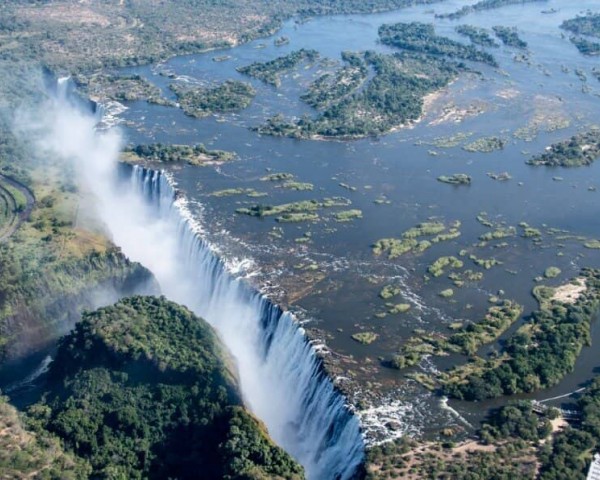Victoria Falls, a well-known UNESCO World Heritage site and a symbol of Africa, is increasingly at risk due to the drought affecting Zimbabwe, Malawi, and Zambia for years. This drought is caused by climate change that triggered El Niño, a natural climate pattern associated with ocean surface warming that influences climate and storm patterns in different parts of the world. However, it occurs in a climate modified by human activities.
The World Meteorological Organization (WMO) has specified that El Niño happens on average every two to seven years, which is unfortunate.
The cry of alarm was raised in 2019 when the flow of water that feeds the waterfalls collapsed by around 50%, recording the lowest level in 40 years. This collapse was a wonder of nature, and the water was already almost dry. Victoria Falls is a much-visited natural attraction named after Queen Victoria of England.
Today, the Zambezi River Authority reported that the water level at Victoria Falls during the third week of March 2024 was 75% lower than the same period last year. This is a concerning figure, as the attraction, a World Heritage site and a famous symbol of Africa, draws millions of visitors to witness the majestic spectacle of the Zambezi River cascading into a narrow and deep gorge over 100 meters. The falls are a natural wonder and a significant source of economic sustenance for Zambia and the Zambezi. However, this vital resource is now in peril of disappearing.
But the repercussions extend beyond the natural environment. The dwindling water levels of the rivers that nourish the falls are leading to the disappearance of fish. Local fishing communities have reported this to ActionAid, which is making it harder for them to catch the fish they need to feed their families and make a living. In Sesheke District, Zambia, where ActionAid supports women fishermen, there are fears of a sharp rise in poverty as the main source of livelihood, the Zambezi River, has seen a significant reduction in fish production compared to previous years.
It is alarming to learn that over 20 million individuals in southern Africa are currently grappling with a severe food crisis due to the drought caused by El Niño. The situation has escalated to the point where, on April 3, 2024, Zimbabwe declared a state of calamity and requested 2 billion dollars to address the hunger crisis. Malawi and Zambia are also in a similar predicament and are joining ActionAid in urgently appealing for assistance from the global community to combat the crisis. The waterfall drought is just one of the many visible consequences of the crisis. Still, it is not the most pressing issue threatening the survival of the communities in these countries.
The fish population in the river has significantly decreased, leading to drastic changes. Fishing communities that rely heavily on fish for sustenance and income are facing a crisis. While providing immediate food aid is essential, investing in long-term solutions to help these communities earn a livelihood and feed themselves in the future is also crucial.












